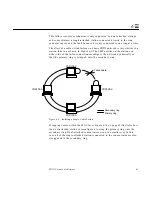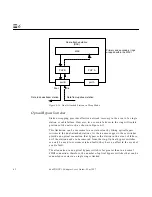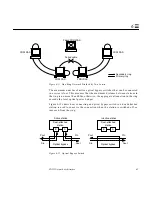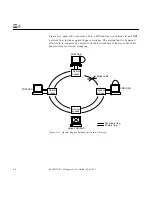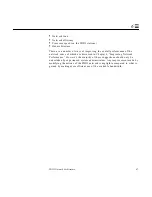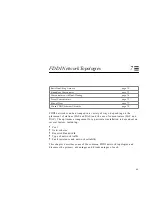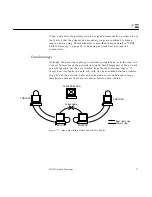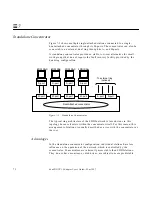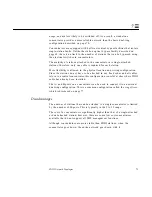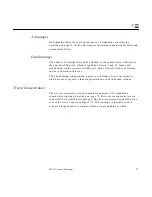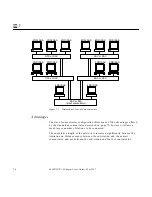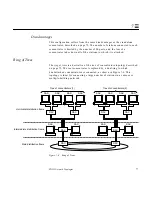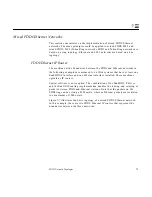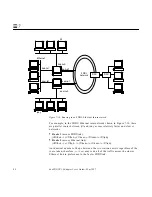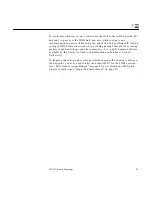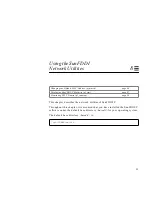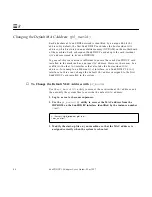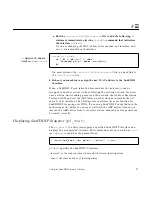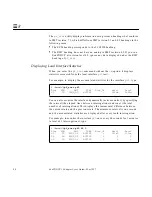
FDDI Network Topologies
73
7
usage, and are less likely to be switched off. As a result, a standalone
concentrator provides a more reliable network than the basic dual-ring
configuration described on page 70.
Concentrators are equipped with built-in electrical bypass facilities that isolate
single-station faults. Unlike the station optical bypass facility described on
page 62, there is no limit to the number of stations that can be bypassed using
the electrical switches in concentrators.
The majority of stations attached to the concentrator are single-attached
stations; therefore, only one cable is required for each station.
More flexibility is allowed in the physical location and wiring configuration.
Since the stations do not have to be attached in any fixed order and all cables
return to a central concentrator, this configuration is useful at sites where FDDI
cable has already been installed.
The A- and B-ports on a concentrator can be used to connect it to an external
dual-ring configuration. This is a common configuration called the ring of trees,
which is discussed on page 77.
Disadvantages
The number of stations that can be attached to a single concentrator is limited
by the number of M-ports. This is typically in the 2 to 32 range.
The cost of a concentrator is significantly higher than that of a single-attached
or dual-attached station; however, there are some low cost concentrators
available that do not support all SMT management functions.
Although concentrators are more stable than FDDI stations, when the
concentrator goes down, the entire network goes down with it.
Summary of Contents for 1.0
Page 13: ...Contents xiii Glossary 141 Index 147 ...
Page 14: ...xiv SunFDDI P 1 0 Adapter User s Guide May 1997 ...
Page 18: ...xviii SunFDDI P 1 0 Adapter User s Guide May 1997 ...
Page 25: ...Part1 InstallingandConfiguring SunFDDI P ...
Page 26: ......
Page 36: ...10 SunFDDI P 1 0 Adapter User s Guide May 1997 2 ...
Page 58: ...32 SunFDDI P 1 0 Adapter User s Guide May 1997 4 ...
Page 73: ...Part2 PlanningandImplementing SunFDDINetworks ...
Page 74: ......
Page 94: ...68 SunFDDI P 1 0 Adapter User s Guide May 1997 6 ...
Page 110: ...84 SunFDDI P 1 0 Adapter User s Guide May 1997 7 ...
Page 128: ...102 SunFDDI P 1 0 Adapter User s Guide May 1997 8 ...
Page 144: ...118 SunFDDI P 1 0 Adapter User s Guide May 1997 9 ...
Page 150: ...124 SunFDDI P 1 0 Adapter User s Guide May 1997 10 ...
Page 166: ...140 SunFDDI P 1 0 Adapter User s Guide May 1997 A ...
Page 172: ...146 SunFDDI P 1 0 Adapter User s Guide May 1997 ...
Page 182: ......



